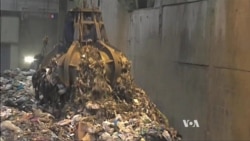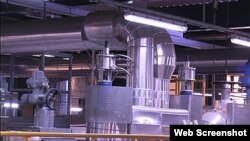The fiery blazes at Oslo, Norway’s main Klemetsrud incinerator burn a huge amount of residential and commercial waste each day—stuff that can’t be recycled. The energy that is generated is used for the heating and electricity of Oslo’s buildings, said Johnny Stuen, the Technical Director for the incinerator.
Capturing greenhouse gases
But the waste-to-energy plant is also Norway’s largest source of man-made greenhouse gas emissions, about 6 percent each year.
And those gases harm the environment by contributing to global warming, which in turn, can lead to drought, floods and increasing sea levels.
So in an effort to create a cleaner environment, Norway undertook the world’s first major test to capture environmentally harmful carbon greenhouse gases from the fumes of burning rubbish.
Filter process kept 90% of harmful gases from environment
During the recent five-month trial, five containers fed exhaust gases through a series of pipes and filters, keeping up to 90 percent of those gasses out of the air, explained Oscar Graff of Aker Solutions, a Norwegian oil services company that oversaw the test. He was pleased that the carbon dioxide was “easy to capture” and there was no problem with the process.
There are about 700 waste-to-energy plants worldwide but technology for carbon capture and storage is expensive. Oslo’s project was funded by Norway’s state enterprise for developing carbon capture and storage.
And with the success at Klemstsrud, Norway is considering building a full-scale carbon capture plant by 2020, where the gases could be shipped to the North Sea and injected into oil and gas fields to increase production.












